knight_muzzleloader
Member
I think it is hand made "comealong" wrench to turn something with a "T" handle.
I think it is hand made "comealong" wrench to turn something with a "T" handle.
I think it is hand made "comealong" wrench to turn something with a "T" handle.
I think you are looking at the picture from the first question? Look through the posts if you want. I think we are on question 3 or 4.
Tim.
Ok then primiary use of the rack is to apply thin CA to a batch of blanks to help the wood burl pieces stick to the PR.
Secondary use is to apply a clear coat finish to a batch of blanks to enable their colors to be seen.
Dan
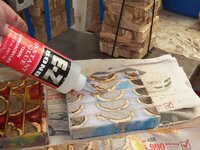 I'm using news paper underneath to the cast block, to protect the bandsaw table, these is one of the times where, blanks will fall apart/separate if I try to rip them from the cast so, the top surface in sanded down to finish status covering the whole mold/cast (normally 6 blanks), when this is done I will then soak every joint with the thin CA, while the bandsaw is one, creating just enough vibration to assist the thin CA to penetrate through the join or at least to secure the join strong enough to allow me to cut each blank from the mold/block and then trim to size, ready for the sander. In this case the sandpaper will get stuck but, doesn't matter, the bottom is not yet finished.
I'm using news paper underneath to the cast block, to protect the bandsaw table, these is one of the times where, blanks will fall apart/separate if I try to rip them from the cast so, the top surface in sanded down to finish status covering the whole mold/cast (normally 6 blanks), when this is done I will then soak every joint with the thin CA, while the bandsaw is one, creating just enough vibration to assist the thin CA to penetrate through the join or at least to secure the join strong enough to allow me to cut each blank from the mold/block and then trim to size, ready for the sander. In this case the sandpaper will get stuck but, doesn't matter, the bottom is not yet finished.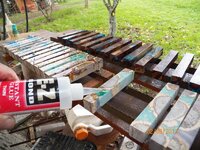 is the reason of the rack creation, blanks seat on top of the blade teeth, making little contact but enough to stay "put" to work the CA on and then spread the excess CA evenly on the blank surface, repeating the process on the 4 surfaces and blanks end grain, a quick spray of accelerator over the lot, and they can be turned to the next surface to repeat the process. Any CA running down stays in the timber board under the rack, and any CA that glue the blank to the metal teeth, if will come out with most ease and no damage to the blank. The day I too this pic, and just before I worked on the Cork blanks with the thin CA, there is a raw of blanks behind that were sprayed a couple of hours before...!
is the reason of the rack creation, blanks seat on top of the blade teeth, making little contact but enough to stay "put" to work the CA on and then spread the excess CA evenly on the blank surface, repeating the process on the 4 surfaces and blanks end grain, a quick spray of accelerator over the lot, and they can be turned to the next surface to repeat the process. Any CA running down stays in the timber board under the rack, and any CA that glue the blank to the metal teeth, if will come out with most ease and no damage to the blank. The day I too this pic, and just before I worked on the Cork blanks with the thin CA, there is a raw of blanks behind that were sprayed a couple of hours before...!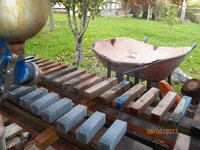
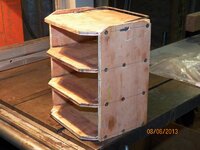
Hahaha, pizza's, huh...???? sorry, wrong...!
Remember folks, something to do with pen turning/making..!:wink:
Cheers
George
Still following this post with interest
It's a rack for your molds to go in a pressure pot.
A couple advantages.
First you can get it in the pot fast.
You can do all your prep on the table then put them into the rack and only have to bend over once to get into the pot.
It also has a handle that is critical as there would be no room and to heavy to manage.
edit...added info.
the solid floor of the racks also protect from any leakage or overflow from getting into the mold below.
also by stacking them with the top open does not obstruct the air as stacking molds directly on top of each other could/would cause problems.
.
Then so what Bruce said but the major advantage is it saves you some fluid because of wood.
How'd you know? The closest I've been to any stabilizing us a picture on this site.
Does it have to do with the draw of the vacuum and keeping the fluid from rapidly exiting the pot? It seems that a pot large enough for that filled with fluid and having vacuum applied would need some sort of barrier to redirect the flow
And keep it in the pot.
Well I was going to say maybe a failsafe for an implosion, that would be under vacuum but under pressure nana...
Well I was going to say maybe a failsafe for an implosion, that would be under vacuum but under pressure nana...
So Bruce, jyreene and others, what happens when you use the casting pressure pot, to capacity/full..???
George
Well I was going to say maybe a failsafe for an implosion, that would be under vacuum but under pressure nana...
So Bruce, jyreene and others, what happens when you use the casting pressure pot, to capacity/full..???
George
You make more blanks than when casting at less than capacity?:biggrin::tongue:
The air will rush in under pressure directly onto your top layer of blanks . Possibly causing the forms to move and splash. I would say it's true advantage is the top plate prevents this from happening.Well I was going to say maybe a failsafe for an implosion, that would be under vacuum but under pressure nana...
So Bruce, jyreene and others, what happens when you use the casting pressure pot, to capacity/full..???
George
You make more blanks than when casting at less than capacity?:biggrin::tongue:
Very true but, if the pot is filled with open mold's (not in the rack) right to the top, and the pot has not have had any modifications inside, what will happen when you connect the air hose to it...!
Any more, and I will better, spelling it out...!
George
The air will rush in under pressure directly onto your top layer of blanks . Possibly causing the forms to move and splash. I would say it's true advantage is the top plate prevents this from happening.
The air will rush in under pressure directly onto your top layer of blanks . Possibly causing the forms to move and splash. I would say it's true advantage is the top plate prevents this from happening.Well I was going to say maybe a failsafe for an implosion, that would be under vacuum but under pressure nana...
So Bruce, jyreene and others, what happens when you use the casting pressure pot, to capacity/full..???
George
You make more blanks than when casting at less than capacity?:biggrin::tongue:
Very true but, if the pot is filled with open mold's (not in the rack) right to the top, and the pot has not have had any modifications inside, what will happen when you connect the air hose to it...!
Any more, and I will better, spelling it out...!
George
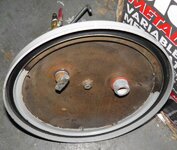
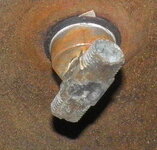
Man I'm stumped. I was already making wild guesses! But let's see. Full capacity pressure pot. That would be a decent amount of pressure you're putting in there. You've taken up some space with the wood structure. I don't see how it would ensure even pressure per layers but that could be it. Maybe it has to do with when you're all done and releasing the pressure.
This is fun. I'm glad you're nudging us along. The hints are great ( now if only I had a clue what they meant!)
The air will rush in under pressure directly onto your top layer of blanks . Possibly causing the forms to move and splash. I would say it's true advantage is the top plate prevents this from happening.Well I was going to say maybe a failsafe for an implosion, that would be under vacuum but under pressure nana...
So Bruce, jyreene and others, what happens when you use the casting pressure pot, to capacity/full..???
George
You make more blanks than when casting at less than capacity?:biggrin::tongue:
Very true but, if the pot is filled with open mold's (not in the rack) right to the top, and the pot has not have had any modifications inside, what will happen when you connect the air hose to it...!
Any more, and I will better, spelling it out...!
George
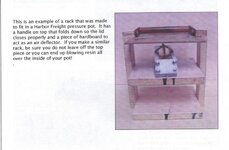
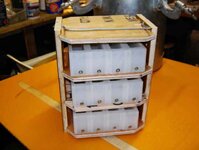
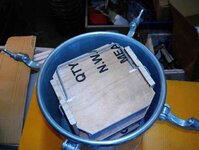
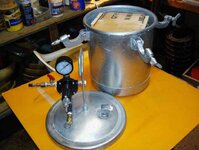
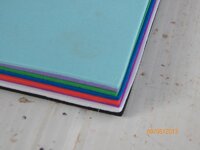
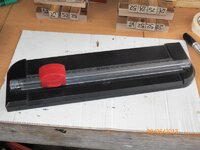 what's their purpose...???
what's their purpose...???